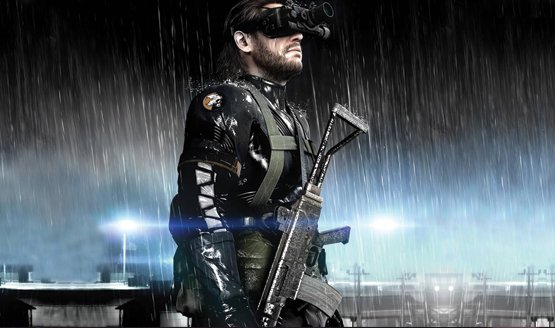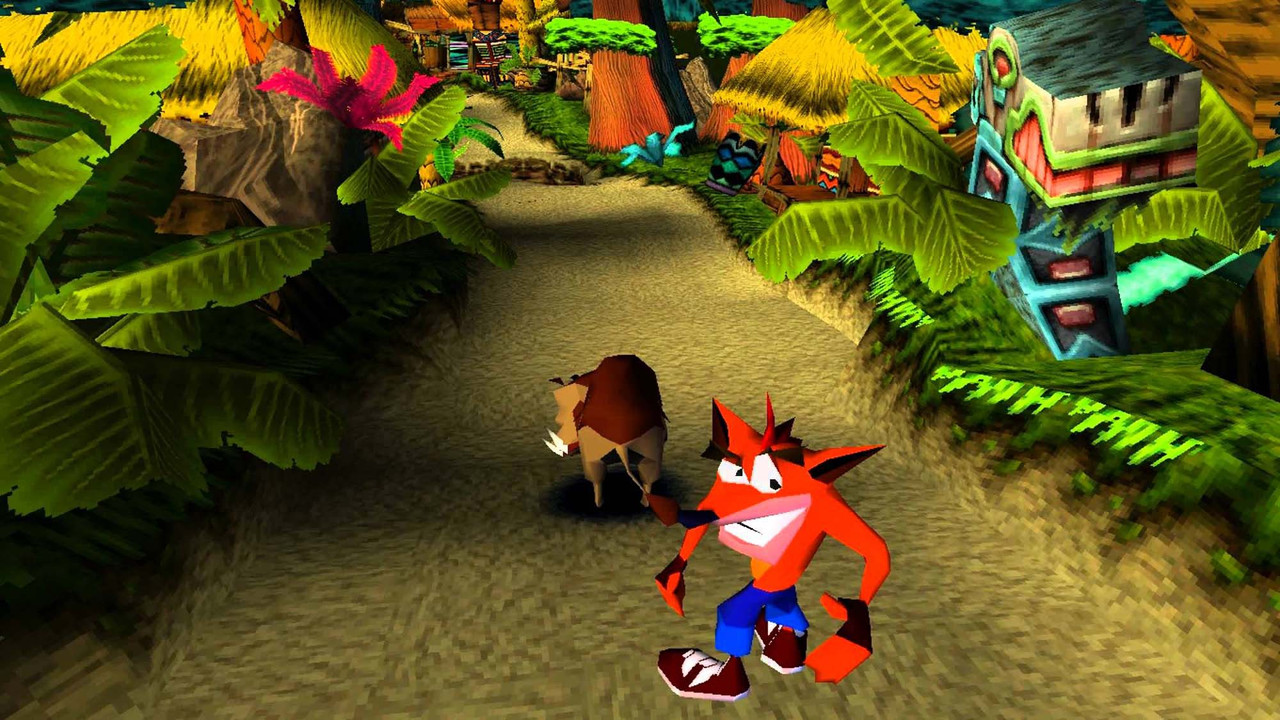The video game demo is, without question, an important footnote in the history of the video game industry. In years gone by, the practice of launching a free vertical slice of ‘Game X’ was considered the norm, and developers often employed the demo as a shrewd piece of marketing to raise awareness long before rolling out the final product.
From 3D Realms to Epic Games, id Software to Kojima Productions, the list goes on and on, and since the demo was first popularized throughout the late ‘80s and early ‘90s, we’ve seen studios release bite-sized chunks of ‘Game X’ to varying degrees of success. Not all demos are created equal, of course, and there are naturally certain titles that lend themselves to the format more so than others. Think of how Red Barrels recently drummed up excitement for Outlast 2 and you’ll begin to realize that a nerve-shredding horror experience is arguably better suited to the demo custom than, say, a story-driven experience in the vein of Uncharted 4.
The Vertical Slice
Then there’s Prey. It’s neither a sequel nor a remake; rather, Bethesda and Dishonored dev Arkane Studios have stripped their sci-fi title down to the bare bones to create a distilled horror experience set aboard a retro-futuristic satellite known as Talos I. Forget the Prey 2 of 2011. It’s since been banished into the dark recesses of space to make room for a lean, mean shooter. But if you were to trace Prey back to its genesis, encountering conflicting reports and nine kinds of rumors in the process, you’ll no doubt uncover a complex, bewildering saga — a saga that leaves one question lingering in the back of the mind: just what on Earth is Arkane rustling up?
And so, in a bid to cut through the noise and essentially set the record straight, a Prey demo will claw its way onto PS4 and Xbox One, offering explorers the chance to play through the opening hour of Arkane’s space oddity. Purists will no doubt resist temptation in fear of stumbling upon any story spoilers, but for the silent majority that only have a passing interest in Prey — or even for those who have only caught wind of the sci-fi thrill ride through the digital grapevine of the Internet — a vertical slice can be used as a kind of self-contained litmus test, lending would-be adopters the chance to get a feel for Prey without shelling out $60.

Prey is also a fine example of a video game demo handled correctly in the sense that it’s arriving one week before launch, and is therefore a relatively accurate representation of the final product. So often demos — both public demos and those presented at conventions — draw criticism for showcasing a carefully culled, truncated portion of ‘Game X’ that is little more than a designed-by-committee highlight reel polished to the nth degree.
Toeing the line between expectation and reality is something we see year in, year out at E3, gamescom, and even the fan-focused PSX, but video game demos also play an important role in establishing expectations, even if the concept itself is beginning to peter out. Gone are the days when developers would strike partnerships with select magazines to bundle in a playable demo as part of its next issue. There are exceptions to the rule, of course, and even in 2017, it isn’t too difficult to locate a publication that still abides by the old tried-and-tested strategy. Nevertheless, for those who grew up in the pre-Internet era, when the only way to sample early builds of games was via floppy discs, the video game demo has already gone the way of the dodo. Why is this?
Critics argue that releasing a demo can prove detrimental to the final product in that it can undercut sales momentum early on in a game’s lifecycle. Four years ago, Puzzle Clubhouse CEO Jesse Schell claimed that releasing a truncated version of ‘Game X’ can reduce sales by up to 50 percent. 50 percent!
Here’s a quote from his speech at DICE 2013:
“You mean we spent all this money making a demo and getting it out there, and it cut our sales in half? Yes, that’s exactly what happened to you. The thing is, with no demo, you’ve gotta buy it if you want to try it.”
Clearly some developers won’t lose too much sleep mourning over the death of the demo, but is that really the right phrase to use? The death of the demo? Make no mistake, the golden age has long since passed, but perhaps it’s more accurate to say that the demo has simply taken on a new form — evolving with the times, as it were.
Early access and beta programs have arguably rendered the concept obsolete, and when you couple this with rising file sizes and the sheer cost of AAA development, it’s small wonder why studios no longer consider the demo — that is, the demo in its purest, old-school form — to be a feasible option when promoting their product. What’s more, monthly subscriptions services in the vein of EA Access now allow players to sample various titles on the eve of launch, and just last month members had the chance to hop into the opening ten hours of Mass Effect: Andromeda five days early.
Gone the Way of the Dodo?
This particular incarnation of the try-before-you-buy approach comes at a cost, though, and even with the likes of PlayStation Plus and the Xbox Games With Gold scheme, subscribers have shelled out to sample online-centric titles such as Kill Strain and Epic Studios’ Paragon long before they were made available to the public. Ditto for beta tests, which are so often marketed as a pre-order incentive, with Call of Duty: WWII being the latest example of said trait.
But that’s just it; if the video game demo once offered a sort of tasting platter free of charge, early access and beta schemes tend to be more concerned with feedback and stress-testing online servers than raising awareness for a game that you otherwise might not have played.

Think of how PlayStation VR came bundled with a demo disc, one which featured a raft of short, truncated experiences designed in a way that allowed users — particularly those subject to nausea and motion sickness — to test the waters before committing to the full experience. It’s a little different in the sense that the PSVR demo disc was simultaneously a showcase of both hardware and software, but it isn’t the only example of studios piggybacking on another product.
For instance, four years ago Sony included a playable demo of The Last of Us with God of War: Ascension — mind you, it wasn’t available immediatley at launch; instead, it unlocked via the main menu at a later date — while Zone of the Enders came packing a small chunk of Metal Gear Solid 2: Sons of Liberty, arguably one of, if not the most memorable demos in recent memory. Almost 15 years later, Kojima Productions launched Ground Zeroes as a way to offset frustration caused by The Phantom Pain‘s prolonged development, and given how it introduced many of the gameplay mechanics that would go on to underpin Hideo Kojima’s MGS swan song, Ground Zeroes was, ostensibly, a demo — even if it’s known officially as a prologue. And don’t get me started on P.T. Three years on and the cancellation of Silent Hills still stings.
As for video game demos, they don’t make them like they used to, and perhaps that’s for the best?
The views expressed in this article are those of the author and don’t necessarily represent PSLS as a whole.
Now Loading...PSOne Mini
-
Now Loading...Should Sony Release a PSOne Mini

-
Heath Hindman

Only if they want millions and millions of the dollars.
-
Paulmichael Contreras

It'd feel like blatant copying, but as we can see there's a huge market for nostalgia. Not to mention, the games we remember taking quite a while to load would suddenly load extremely quickly owing to this hypothetical unit's flash storage. I'd say if Sony does this, they one-up Nintendo and at least provide wireless controllers.
-
Stephen Bitto

Knee jerk reaction is yes but after some pondering I'm not sure how well the library would hold up. The first wave of 3D games was pretty rough around the edges.
-
Zarmena Khan

I don't really understand the hype behind all these minis. 99% chances are I won't be playing those games again, anyway. It looks like something that'd be cool to have for a while and then you just get bored of it.
-
Chandler Wood

Nostalgia factors in largely to the desire for them to do this, but there are a few reasons I think Sony won't. First they are doing a lot with remakes and remasters, as well as the PS2 classics series. Second is that as much as people say they want the ability to play these classics/backwards compatibility, in practice it seems to be utilized far less than demand indicates, making the investment in something like this divide time and resources from more current gaming endeavors.
The reason Nintendo can get away with it is that their success is hinged entirely on their classic franchises and the nostalgia of yore. I don't think Sony has that problem and would prefer they look forward rather than trying to hard to focus on and revive the past in it's unaltered state.Sony also has a platform where they could just release a PS1 collection on PS4 instead of doing a dedicated platform for it. -
Michael Briers

I'm with Zarmena in that I view the minis as novelty items, something I'd pick up on a whim only to retire it to the cupboard three weeks later. That's not to say Sony shouldn't explore the idea of a PSOne Mini. There's a huge catalogue begging to be cracked open, and assuming the company produces a competent product with decent controllers and storage, I could see the device becoming a huge hit at, say, PSX in December.
-
Alex Co

I think Sony should. However, I do think that if Sony does indeed do this, that I'll get one, and most likely play it for a few minutes, and stow it somewhere and never to be seen again. Mind, that could change, but given how many new games are released every week, it's a tall order having to replay something that I finished years ago.
Having said that, I can see this thing selling like hotcakes. Sure, you'll get people saying "LOL Sony copied Nintendo fai11ll!" or whatever, but who cares, right?
I say give people what they want, and it seems they want these retro consoles, so Sony should cave in and do it.
-
Mack Ashworth

It's not something that I would play with, but I can see it selling very well.
After seeing the success of the Nintendo Classic Mini, Sony has to be doing something similar.















